In the late 1920s, the Simson company built a handful of prototype pistols for consideration by the German military. Noises had been made about replacing the Luger with something more cost effective, and several companies moved to design options. The Simson pistol was chambered for the 9x19mm Parabellum cartridge (as the military wanted), but was a simple blowback, unlocked action. This allowed it to be cheaper to manufacture, although the military much preferred a locked action. The potential pistol replacement program quickly ended, though, with a decision to allocate funding to development of carbines and submachine guns instead.
Here is one of the 3 known surviving Simson pistols (click to enlarge any of the photos):
Please note that the magazine in these photos is actually a P08 Luger magazine modified to add a locking catch so it will lock into the Simson pistol. However, the magazine is slightly too short to function in the gun, and does not feed properly. I have not found a surviving authentic Simson magazine to photograph.


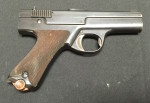



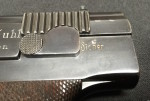

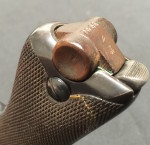
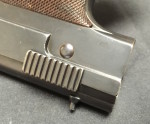




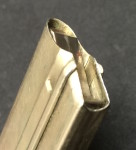
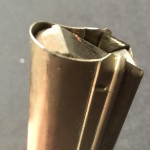
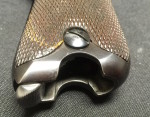

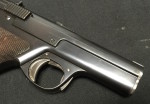


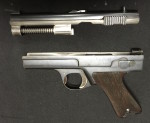





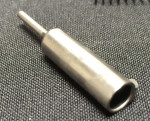








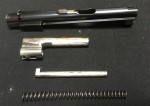




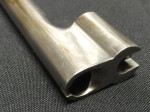
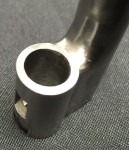
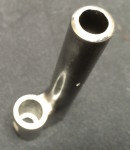
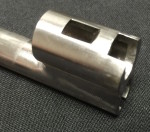

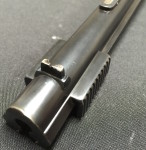
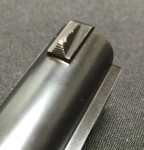

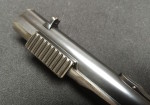
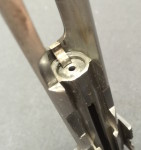
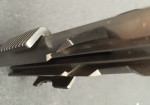
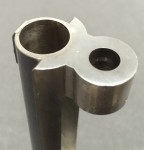
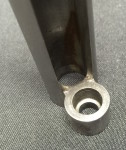
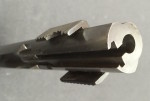
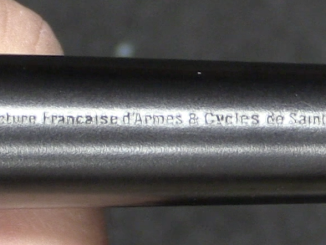


That is a gorgeous pistol great lines. It was a little heavy for the caliber being a straight blow back but it felt great in the hand. With more development maybe it could have been a cheaper alternative to the Luger.
As http://www.municion.org/9x18ultra/9x18ultra.htm says (and if I understand correctly)
9x18mm Ultra was developed by GECO in 1930s for Luftwaffe to allow creating of blow-back operated automatic pistol, some automatic pistols were created for firing it, but never pass beyond experimental stage.
My question: Why it was not adopted? It was due to design flaw in pistol or that cartridge was rejected? Does GECO designers about Simson attempts? Does other branches* (Heer or Kriegsmarine) show interest in this development?
Anyway during war Luftwaffe ended with 7,65-mm Browning (.32 Auto) chambered automatic pistols (various models)
–
*some often ignored facts:
LUFTWAFFE is subset of WEHRMACHT
HEER is subset of WEHRMACHT
KRIEGSMARINE is subset of WEHRMACHT
WEHRMACHT is not equal to HEER
is: “(…)GECO designers about Simson(…)”
should be: “(…)GECO designers know about Simson(…)”
Daweo,
you questions have been asked many times before. Due to lack of surviving documents, no definitive answer is possible. Definitely the army thought everything less than 9 mm Parabellum (Pistolenpatrone 08) was insufficient. 9 mm Ultra was resurrected in Germany in the 70ies (Walther PP Super, SIG P230 as a replacement for 7.65 mm Browning PPK used by police)) but again could not convince in the long run.
Regarding the ignored facts you mention, it is important to know that the army was responsible for infantry weapons, including those used by Luftwaffe and Kriegsmarine (originally also Waffen-SS).
Luftwaffe nevertheless did what it desired. FG42 is an example that would never have been possible if Luftwaffe had been playing by the rules. (While technologically impressive, I consider FG42 a failure because it could not fulfill its intended role: rifle and light machine gun in a single weapon.)
Wehrmacht (OKW) was more or less an administrative entity (look at dyed-in-the-wool bureaucrat Wilhelm Keitel, not a military leader but a lackay type). The army (OKH) was not subordinate to Keitel in most areas of the war effort.
I found some additional information about this cartridge:
http://www.megasword.ru/index.php?pg=846
As manufactured by GECO in 1936:
muzzle energy: 303 J
muzzle velocity: 300 m/s
overall length: 25 mm
case length: 17,7 mm
cartridge mass: 10 g
bullet mass: 6,5 g
powder charge: 0,32 g
Post-war loading by GECO:
muzzle energy: 333 J
muzzle velocity: 330 m/s
Post-war loading by Hirtenberger:
bullet mass: 6,5 g
muzzle energy: 339-363 J
muzzle velocity: 323-345 m/s
Well, can I conclude:
There is no place for yet another biggest cartridge suitable for blow-back operated automatic pistols when we have 9×17 Browning (.380 Auto) and 9×18 Makarov cartridges. Or am I wrong?
Good lesson for everyone who would like to attempt 9mm Para blow-back pistol. Most finishes are super high quality, btw.
They could have sold it commercially as the Hochpunkt.
Stag
Are you saying this is an early model of the High-Point line?
glock like in shape and grip angle
Also shaped like the Steyr M-A1 9mm Pistol
I can’t see the point of making a Luger-style magazine for this pistol, but making it longer, that is, too long for the Luger. Why not make a Luger mag of the correct length, but with the added locking-catch slot, so that they may still be fed into both pistols?
Does it carry an extra round or something?